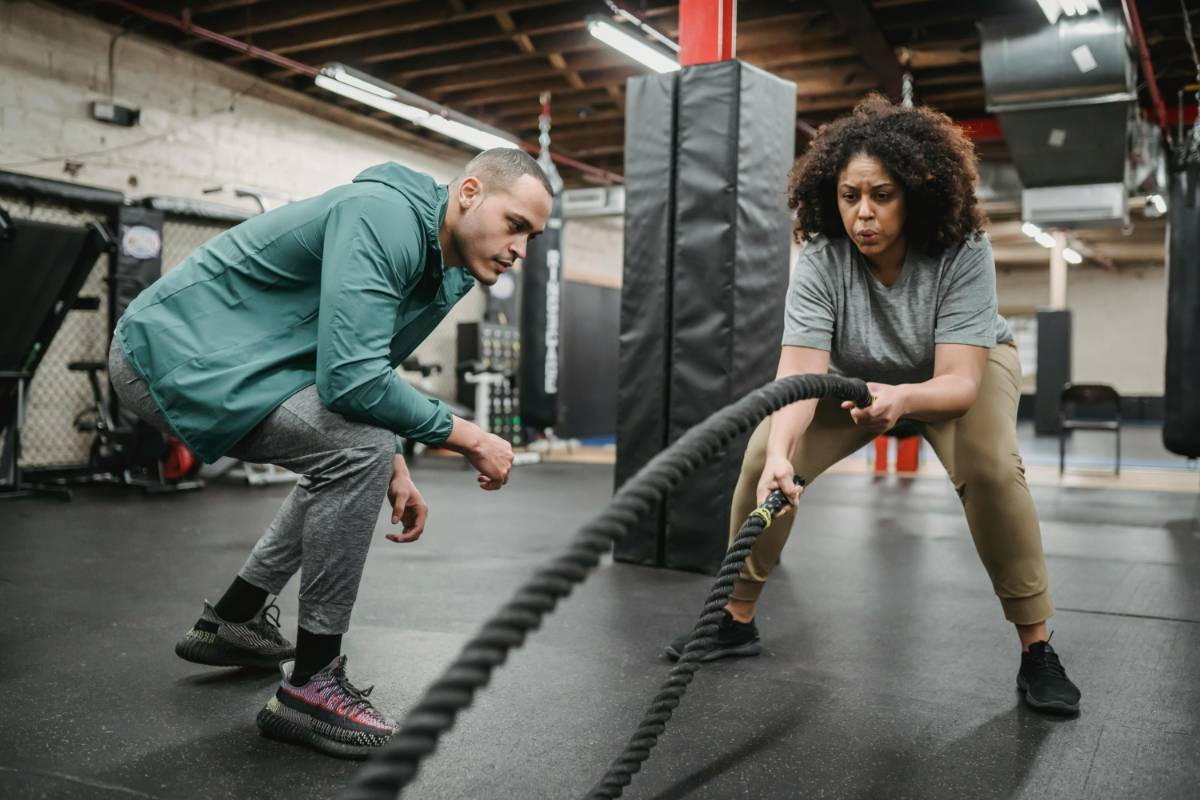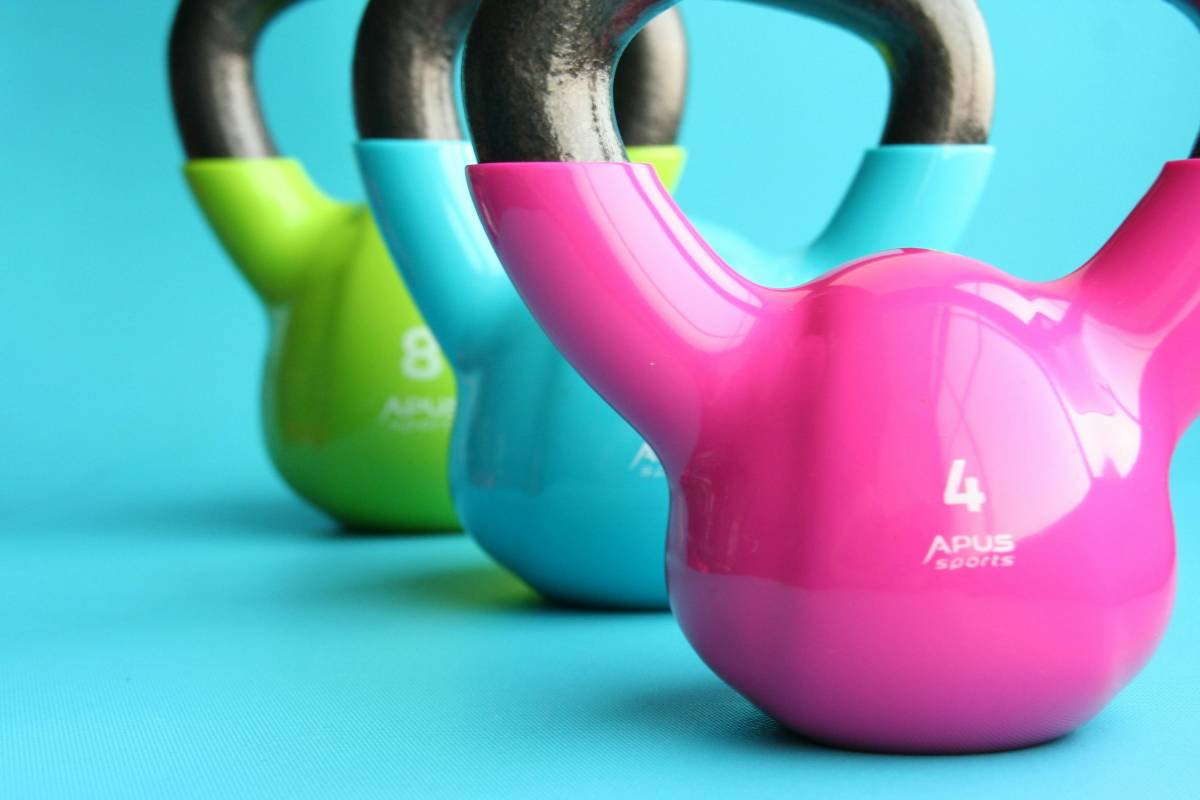How to Include Functional Training in Your Fitness Regimen

3 min read
|26 May 2025Functional training focuses on exercises that mimic everyday movements, helping you build strength, stability, and coordination for real-life activities. Integrating functional training into your fitness regimen can enhance your overall performance and improve your ability to perform daily tasks. Here’s how you can effectively include functional training in your workout routine.
1. Understand Functional Training
Functional training involves exercises that engage multiple muscle groups and joints, replicating natural movements such as bending, lifting, twisting, and reaching. The goal is to improve your overall functional capacity and movement efficiency. Before incorporating functional training, familiarize yourself with its principles and benefits to ensure it aligns with your fitness goals.
2. Assess Your Current Fitness Level
Evaluate your current fitness level and identify areas that could benefit from functional training. Consider factors such as balance, flexibility, strength, and coordination. This assessment will help you tailor functional exercises to address your specific needs and enhance your overall performance.
3. Start with Basic Exercises
Begin by incorporating basic functional exercises into your routine. Examples include squats, lunges, push-ups, and planks. These movements target multiple muscle groups and improve core stability, which is essential for functional training. Focus on mastering proper form and technique before progressing to more advanced exercises.
4. Incorporate Functional Movements
Integrate functional movements into your workouts that replicate everyday activities. Exercises like kettlebell swings, medicine ball throws, and step-ups mimic real-life actions and improve overall functional strength. Include these movements in your routine to enhance your ability to perform daily tasks with ease.
5. Use Unstable Surfaces
Incorporate unstable surfaces, such as balance boards, stability balls, or BOSU balls, into your functional training. Training on unstable surfaces challenges your balance and core stability, enhancing your functional strength. For example, performing squats on a stability ball can improve your balance and strengthen your stabilizing muscles.
6. Include Multi-Planar Movements
Functional training involves movements in multiple planes, including sagittal, frontal, and transverse planes. Include exercises that challenge your body in different directions, such as lateral lunges, rotational exercises, and agility drills. Multi-planar movements improve your overall mobility and functional capacity.
7. Incorporate Resistance Training
Combine resistance training with functional exercises to enhance strength and endurance. Use free weights, resistance bands, or bodyweight exercises to add resistance to functional movements. For example, performing weighted lunges or resistance band rows can increase the intensity of your functional training and improve overall strength.
8. Design Functional Circuits
Create functional training circuits that include a variety of exercises targeting different muscle groups and movement patterns. For instance, design a circuit with exercises such as burpees, kettlebell swings, and medicine ball slams. Performing exercises in a circuit format enhances cardiovascular endurance and overall functional strength.
9. Incorporate Functional Training into Daily Routine
Incorporate functional exercises into your daily routine to reinforce movement patterns and improve overall functionality. For example, perform bodyweight squats while waiting for your coffee to brew or practice balance exercises while brushing your teeth. Small, consistent efforts can contribute to significant improvements in functional strength and mobility.
10. Seek Professional Guidance
If you’re new to functional training or want to ensure you’re performing exercises correctly, consider working with a fitness professional. A certified personal trainer can design a personalized functional training program, provide guidance on proper technique, and help you achieve your fitness goals safely and effectively.
Incorporating functional training into your fitness regimen can enhance your overall performance and improve your ability to handle everyday activities. By focusing on functional movements, using unstable surfaces, and incorporating resistance training, you can build strength, stability, and coordination for a more functional and efficient body. Embrace functional training to elevate your fitness routine and achieve better overall health and performance.
MORE ARTICLES

3 min read | 08 Apr 2025
Combining HIIT with Strength Training for Maximum Results
Combining High-Intensity Interval Training (HIIT) with strength training is a powerful strategy to maximize fitness results. This approach allows you to benefit from the cardiovascular and metabolic advantages of HIIT while also building muscle and strength through resistance training. In this article, we'll explore how to effectively combine these two workout methods for optimal results.

2 min read | 07 Apr 2025
How to Recover After an Intense HIIT Session
High-Intensity Interval Training (HIIT) can be demanding on your body, pushing your limits and delivering significant fitness benefits. However, proper recovery is crucial to maximize these benefits and prevent injury or burnout. In this article, we'll explore effective strategies for recovering after an intense HIIT session.

5 min read | 06 Apr 2025
Best Equipment for HIIT Workouts
High-Intensity Interval Training (HIIT) is a versatile and effective workout method that can be tailored to fit various fitness levels and goals. While you can perform HIIT workouts with just your body weight, incorporating the right equipment can enhance the intensity and variety of your sessions. In this article, we’ll explore some of the best equipment for HIIT workouts to help you get the most out of your training.

3 min read | 05 Apr 2025
HIIT Workouts You Can Do at Home
High-Intensity Interval Training (HIIT) is a fantastic way to get an effective workout in a short amount of time, and the best part is that you don’t need a gym or fancy equipment to reap the benefits. HIIT workouts can be easily performed at home using just your body weight and minimal space. In this article, we’ll explore some HIIT workouts you can do at home to boost your fitness levels and burn calories.

3 min read | 04 Apr 2025
The Science Behind HIIT and Its Benefits
High-Intensity Interval Training (HIIT) has gained immense popularity for its ability to deliver effective workouts in a short amount of time. But what makes HIIT so effective? Understanding the science behind HIIT can help you appreciate its benefits and incorporate it effectively into your fitness routine. In this article, we will delve into the science of HIIT, exploring how it works and the benefits it offers.

4 min read | 03 Apr 2025
How to Incorporate HIIT into Your Existing Workout Routine
High-Intensity Interval Training (HIIT) is a highly effective workout method known for its ability to boost fitness levels, burn calories, and improve overall health. If you already have a workout routine in place, incorporating HIIT can enhance your results and provide a new challenge. In this article, we’ll explore how to seamlessly integrate HIIT into your existing workout routine, making the most of its benefits while complementing your current regimen.
RECENT POSTS
1
Natural Ingredients to Look for in Personal Care Products
5 min read | 27 May 20252
How to Improve Your Oral Hygiene Routine
3 min read | 26 May 20253
The Benefits of Facial Massages for Anti-Aging
4 min read | 25 May 20254
How to Keep Your Nails Healthy and Strong
2 min read | 24 May 20255
Self-Care for Busy Professionals: Simple Steps to Feel Refreshed
2 min read | 23 May 20256
Men's Skincare: Essential Tips for a Clear Complexion
4 min read | 22 May 2025MORE POSTS

Top Functional Exercises for Everyday Strength
2 min read | 11 Apr 2025
What is Functional Training and Why is it Important?
5 min read | 10 Apr 2025
Common HIIT Mistakes and How to Fix Them
5 min read | 09 Apr 2025
Combining HIIT with Strength Training for Maximum Results
3 min read | 08 Apr 2025
How to Recover After an Intense HIIT Session
2 min read | 07 Apr 2025
